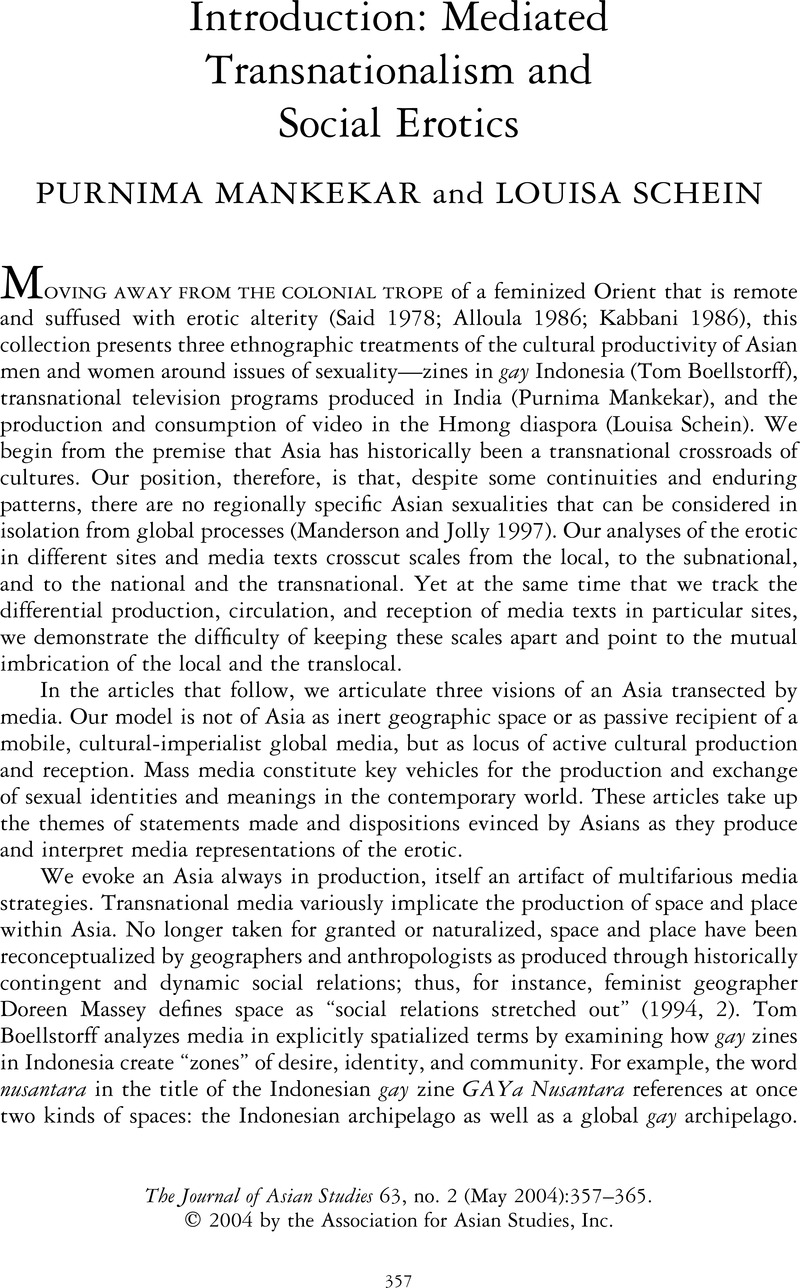Crossref Citations
This article has been cited by the following publications. This list is generated based on data provided by Crossref.
FROHLICK, SUSAN
2007.
Fluid Exchanges: The Negotiation of Intimacy between Tourist Women and Local Men in a Transnational Town in Caribbean Costa Rica.
City & Society,
Vol. 19,
Issue. 1,
p.
139.
Moskowitz, Marc L.
2008.
Multiple Virginity and Other Contested Realities in Taipei's Foreign Club Culture.
Sexualities,
Vol. 11,
Issue. 3,
p.
327.
Mankekar, Purnima
and
Schein, Louisa
2012.
Media, Erotics, and Transnational Asia.
p.
1.
2012.
Media, Erotics, and Transnational Asia.
p.
323.
Farquhar, Judith
2012.
Media, Erotics, and Transnational Asia.
p.
53.
Constable, Nicole
2012.
Media, Erotics, and Transnational Asia.
p.
111.
mankekar, Purnima
2012.
Media, Erotics, and Transnational Asia.
p.
173.
Schein, Louisa
2012.
Media, Erotics, and Transnational Asia.
p.
203.
Henrion-Dourcy, Isabelle
2012.
Présentation.
Anthropologie et Sociétés,
Vol. 36,
Issue. 1-2,
p.
9.
Dell, Heather
2012.
Media, Erotics, and Transnational Asia.
p.
267.
Allison, Anne
2012.
Media, Erotics, and Transnational Asia.
p.
297.
Cho, John (Song Pae)
2012.
Global fatigue: Transnational markets, linguistic capital, and Korean‐American male English teachers in South Korea1.
Journal of Sociolinguistics,
Vol. 16,
Issue. 2,
p.
218.
Manalansan, Martin F.
2012.
Media, Erotics, and Transnational Asia.
p.
33.
Boellstorff, Tom
2012.
Media, Erotics, and Transnational Asia.
p.
75.
Zhang, Everett Yuehong
2012.
Media, Erotics, and Transnational Asia.
p.
139.
Friedman, Sara L.
2012.
Media, Erotics, and Transnational Asia.
p.
233.
Owens, Christina D.
2021.
Of Comics and Charisma: Representing Transpacific White Masculinities.
New Global Studies,
Vol. 15,
Issue. 1,
p.
47.



